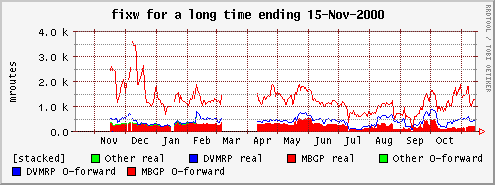
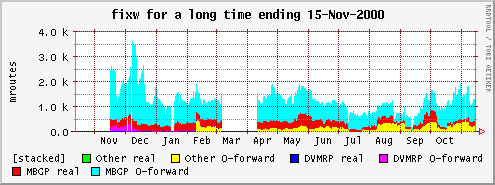
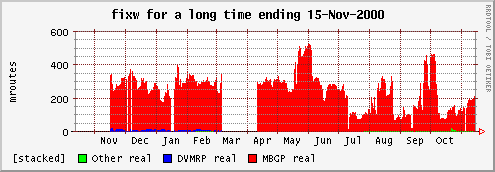
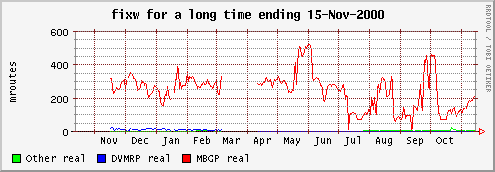
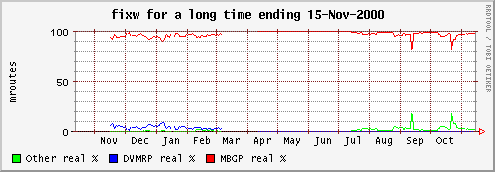
Data collection's purpose: to monitor the number of sources in each "half" of the Internet multicast infrastructure - PIM-over-MBGP and DVMRP-plus-PIM-over-DVMRP.
How the data collection works:
The data is collected every 5 minutes. Because of the high volatility, I'd like to collect it more often but using SNMP it takes a couple of minutes to collect the data. (The high volatility is not solely due to entries which have not been used to forward any packets; see the different graph styles below.)
This metric is flawed in that the number of sources in the whole infrastructure is dependent on what multicast events are occurring, so no conclusions can be drawn from the absolute numbers. In addition, the number of DVMRP entries is dependent upon the state of fixw-mbone.nsn.nasa.gov's conneciton to the DVMRP infrastructure, which is unreliable (see relevant data collection).
There are five types of graphs:
There is no data available on entries used to forward no traffic before September 1999. There is no data available for the period February 1999-August 1999; this represented a time during which the data collection was suspended (the router being collected from switched authentication mechanisms and it took me a long time to get the SNMP data collection working).
Bill Fenner - <fenner@research.att.com>
This material is based upon work supported by the National Science Foundation under Grant No. 9729498. Any opinions, findings and conclusions or recommendations expressed in this material are those of the author and do not necessarily reflect the views of the National Science Foundation (NSF).